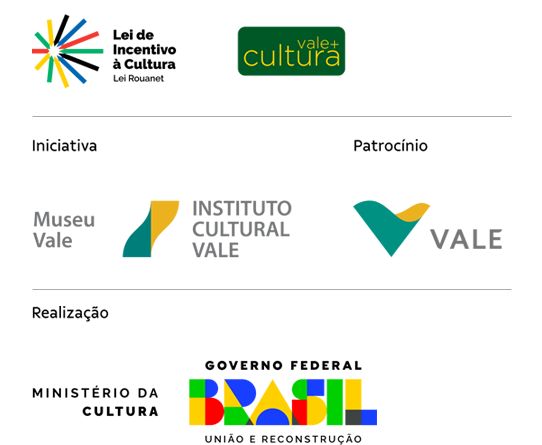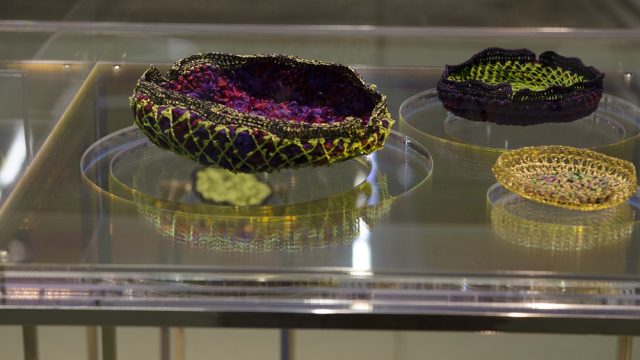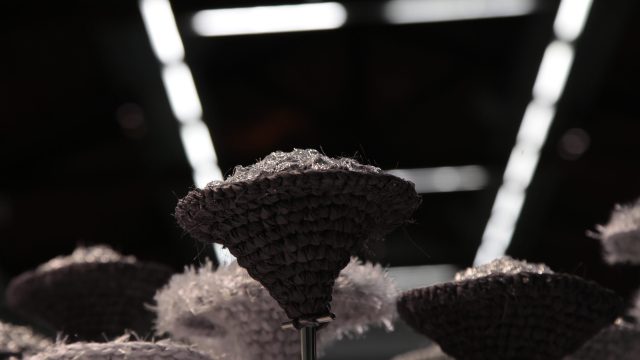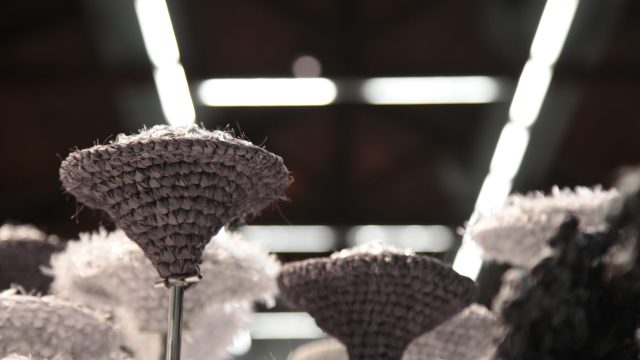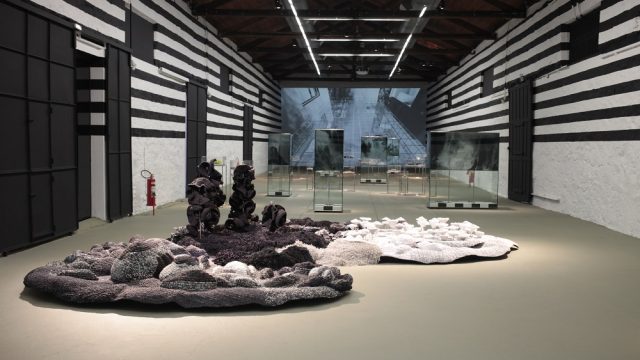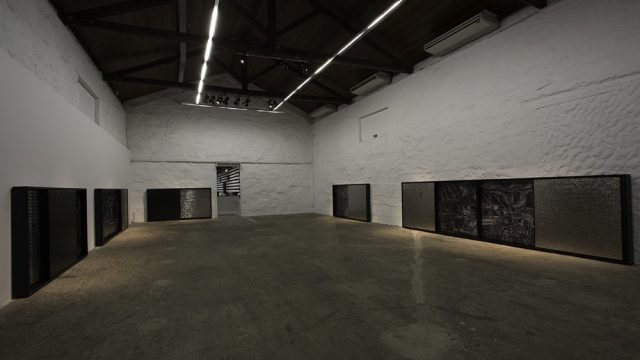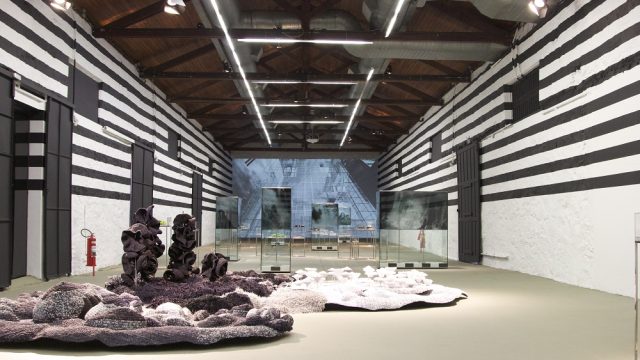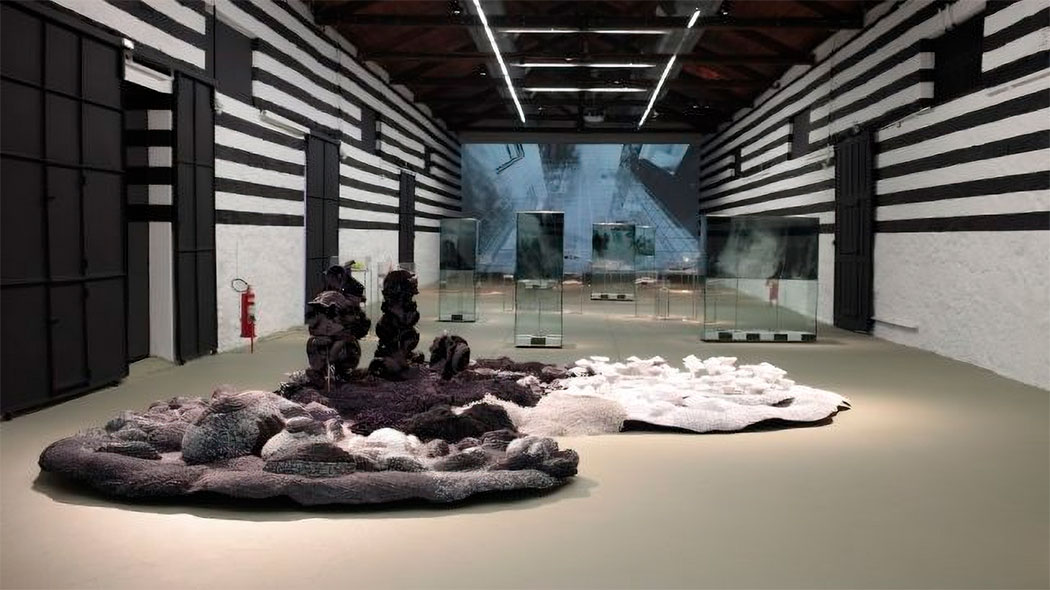
In her installations and works spanning various media and languages, artist Ana Maria Tavares has been examining the most iconic buildings and gardens belonging to the Brazilian modernist legacy – works by Oscar Niemeyer, Paulo Mendes da Rocha, Lina Bo Bardi, and Roberto Burle Marx. Some of these installations, which the artist defines as “realities in suspension”, establish a tensioned relationship between nature, landscape, architecture and modernity. Among them are the artist’s installations in Brazil in the 1990s: Porto Pampulha, 1997, created for the Pampulha Museum, the former casino designed by Oscar Niemeyer with landscaping by Roberto Burle Marx, and the following year, the exhibition Relax’o’visions, created for the Museum of Sculpture in São Paulo, designed by Paulo Mendes da Rocha. In the 2000s, many projects were realized, with highlights in 2004, the installation in São Paulo, Enigmas of a Night with Midnight Daydreams, and the work Victorias Regias (for Naiha) at the Toyota Municipal Museum; in 2008, Crystal Waters, a solo exhibition acquired for the Kröller-Müller Museum collection in the Netherlands. Among the recent works is the collaborative project that the artist carried out in 2013 for the city of Fortaleza, Ceará, which culminated in the exhibition Natural-Natural: Landscape and Artifice, clearly revealing the direction of the artist’s work, aimed at a close examination of the ideologies underlying the modern project in Brazil. Ana Maria Tavares has held numerous exhibitions in Brazil and abroad and has been invited as a visiting artist by important institutions such as the Massachusetts Institute of Technology (MIT), the Humanities Research Center at Rice University, and the University of California, Berkeley, in the USA; the Universidad Nacional de Colombia in Bogotá; and TEOR/éTica in San José, Costa Rica.
Born in Belo Horizonte, Minas Gerais, Ana Maria Tavares grew up surrounded by the modernist spaces created by Niemeyer and Burle Marx for Pampulha (a neighborhood in Belo Horizonte), having an effective experience of the evident relationships between architecture, landscaping, mural painting, and sculpture; and, above all, of practiced architecture. In this context, this experience impacted the artist from an early age, contributing to the understanding of nature and architecture as ideological constructions, which became a reference for her theoretical investigations and artistic production. In Ana Maria Tavares’s words, “with Pampulha, I understood that landscape was nature and nature, architecture. Long before knowing anything about art, I knew about Pampulha (…). For me, the landscape is a construction impregnated with the ideologies of its time and, therefore, investigating it became the center of my concerns as an artist”.
The exhibition Atlântica Moderna: Purus and Blacks is a specially created installation project in 2014 during the months the artist spent in Houston, Texas, USA, invited by the Humanities Research Center at Rice University to conduct research and teach the course “Brazil Built – the clinic, the tropical, and the aesthetic”, in collaboration with architectural historian and critic Fabiola López-Durán.
For the Vale Museum, the artist builds on the work of icons of modernist architecture: Austrian Adolf Loos (1870-1933), Frenchman Le Corbusier (1887-1965), Italian-Brazilian architect Lina Bo Bardi (1914-1992), and Brazilians Oscar Niemeyer (1907-2012) and Burle Marx (1909-1994). In an installation featuring sculptures, video, and sound, the artist presents the tropical nature as the locus for understanding the relationship between culture and nation. According to architectural historian and critic Fabiola López-Durán and Nikki Moore from Rice University, “While nature and culture have acquired a binary status, Ana Maria Tavares’s work seems to assert that nature and artifice are one and the same. Between humanism and post-humanism, between the white and aseptic style of modernism and the ornaments of the ‘other,’ this exhibition reveals Tavares’s fascination with the maneuvers of modernity to reign in nature, unveiling the complicity between modernism and ideology in its political, social, and biological implications”.

Fale conosco
Redes sociais

